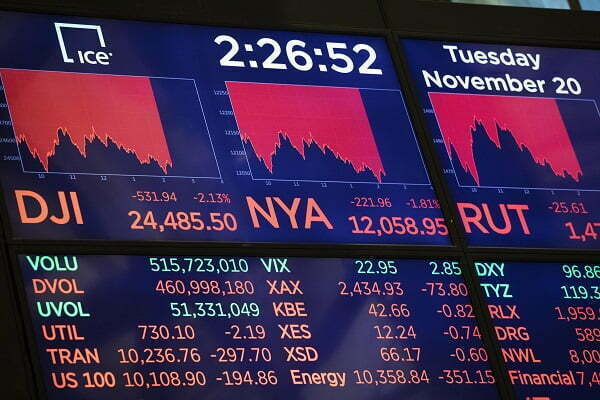- Stocks and bond yields fall as economic worries persist
- Major averages trade higher on better than expected trade data
- The U.S. inverted yield curve is seen as an early indicator of a recession
Wednesday saw stocks fall, tracking bond yields, as lingering worries were expressed over the possible economic slowdown.
The Dow Goes Lower
The Dow went a notch lower as it dipped 50 points. The S&P 500 and Nasdaq decelerated at 0.5 percent and 0.8 percent, respectively.
Major averages traded on advantageous trade data earlier in the day. The trade deficit of the U.S. went down to $51.15 billion from the beginning of the year, averaging more than the expectation and could harbor more to this quarter’s GDP.
Early Indicators of an Inverted Yield Curve
Lower levels were recorded after the benchmark 10-year rate traded at 2.36 percent showing their lowest since 2017. Investors are keen and are keeping an eye out on rates after the 10-year fall under the 3-month rate this past week for the first time since 2007. Investors call this an inverted yield curve and often signifies a recession.
According to data from Reuters, the U.S. Treasury yield curve has relatively inverted in the wake of every recession in the preceding 50 years and has only once offered false readings.
Stephen Moore, who has high rates and is expected to be nominated to the Federal Reserve Board of Governors made yields fall on Wednesday after he called for the central bank to cut rates by half a percentage point. He made his sentiments known on the New York Times saying he is neither a “sycophant” nor a “dove” for President Donald Trump.
Investors Pile into Treasury on Release of Weak Economic Data
The weaker-than-expected economic data made investors pile into the treasury. The data has incensed investors into making conclusions that economic growth is slowing down.
The biggest drop was recorded by the Chinese industrial profit since 2011 at the beginning of the year falling 14 percent to date. Tuesday’s data showed consumer confidence slipped for the fourth time in five months.
The main indexes postulated by Wall Street registered solid gains in the successive sessions but finished under their sessions highs in a reflection of the overboard concerns about the economic outlook.
“We need global growth to stabilize to help propel stocks higher from here,” Tom Essaye, founder of The Sevens Report, said in a note. “The currency and bond markets continue to flash large and bright ‘caution’ signs on this market, and until bond markets start ‘acting’ better, I think it’ll be hard for stocks to sustainably rally.”























